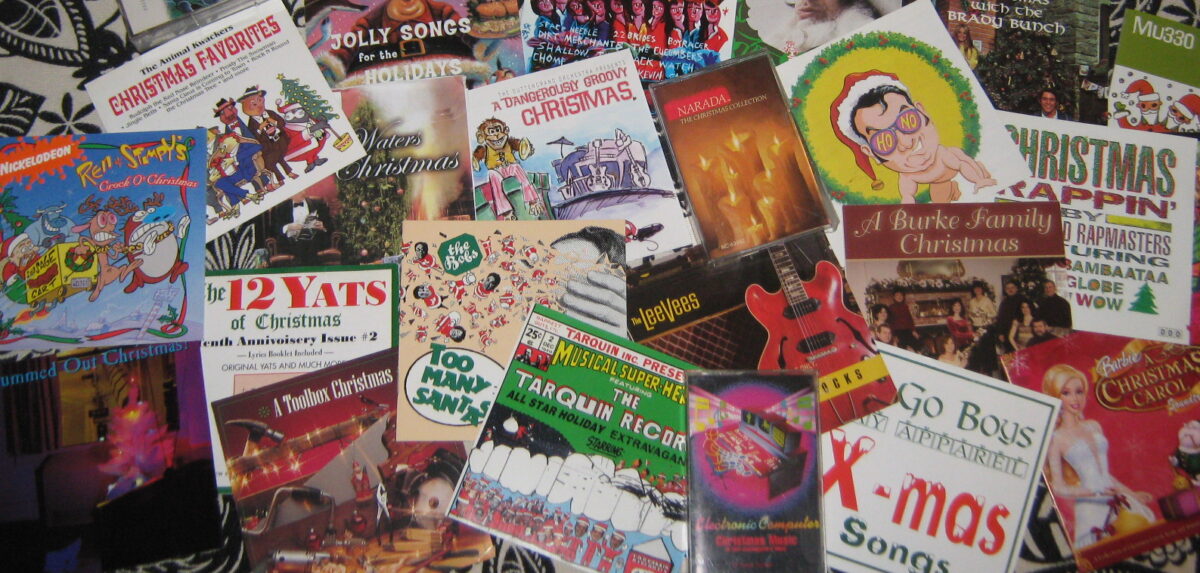Our American Odysseus, the wascally wabbit, has been a staple of our culture from the ‘thirties. According to Guinness World Records, he (it) is the ninth most portrayed film figure world wide. I guess he’s okay because how he made Mel Blanc famous (many decades later).
A resurgence in Merrie Meoldies/Looney Toons came around with the end of the millennium infantilism that celebrated protracted second childhoods. That’s when most of the Christmas albums that thought it was a hoot to have cartoon voices sing serious carols came out.
The concept album Kwazy Christmas sells a tale of all the talking animals festing at Granny’s house (her of the bird/cat ownership). It’s too hard to say goodbye at the end of the album, so they all goof on “Carol of the Looney Toons Bells.” That taste should give you an idea why we loved/hated all the ADHD we inspired in the ’90s.
A Looney Toons Sing-a-Long came out in 2007 and featured each character cracking wise and performing trads.
But before that, in 2003, a more original (less Mel Blanc, who passed in ’89) album of more original songs (Christmas with the Looney Toons) came out with…
Pepe LePew singing “Christmas in Paree.” This nugget takes its continental time to run the joke song. Bravo.
Tweety Bird singing “I Tawt I Taw Ol’ Tanty Claus” evoking real Blanc-ian mania. Cute, if heavy on sound fx.
Daffy Duck singing “All I Want for Christmas is More, More, More.” Fricative, frenzied fun.
[Both these albums have been recycled in newer releases. ]
The Looney Toons Show from 2002 helped rediscover slapstick if not adult-disapproved violence. “Christmas Rules” brings us excitedly into the new century.
I want to spend some time on real Mel Blanc. One of his last Looney Toons assignments was a 1974 Peter Pan Records album-readalong-book called Holly Daze. He does all the voices, just like in his hayday.
“I Love Snow” is bugs convincing Holly Daze (Yosemite Sam) that winter outside the desert can be cool.
Convincing Jr. Bunny that “Christmas Isn’t Christmas Without Santa Claus” only takes a short song as well.
Perhaps most child friendly, “Do You Believe in Santa Claus?” grays the area between secular and faith. Adorbs!
